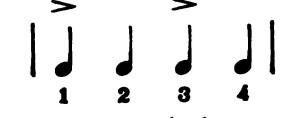Submitted by: Jeremy Nelson PT
12.0 Place Alternate foot on Step or Stool While Standing Unsupported
This component examines the capacity of the patient to perform a weight shift to unload the extremity that is going to perform the step up motion. The goal of the component is to be “able to stand independently and safely and complete 8 steps in 20 seconds”. The time part of the test provides an insight into the overall coordination power that exists in the neuromuscular system. The first task is to perform the weight shift and maintain center of gravity over the base support of the foot into a single limb pattern. The more difficult task comes next, supporting of the stance limb of the stepping up of the contralateral side.
As the lower extremity flexes at the hip and knee to place the foot on the stool, the posterior moment must be countered by the stance limb with an anterior moment. The stance hip must be strong enough to support the COG and BOS relationship in the single limb position as well a counter the posterior moment.
If the performer “needs assistance to keep from falling/unable to try” then presumably the first task was not completed. Without the initial weight shift the stepping lower extremity is unable to be unweighted to perform the motion. This is likely from inadequate control of COG to perform the weight shift or an inadequate BOS in terms of poor foot posture. Reviewing the asymmetrical stance critical tasks into the single limb critical tasks will provide the desired outcomes to measure current reality against.
Again, similar to the other Berg components time is an element to investigate and record speed as function of strength, coordination and power. In order for the extremity to successfully step up there needs to be adequate time for that to happen. The time is developed through the shifting of the body weight to the extremity that is going to be in a close kinetic chain into a single limb position.
As is described in the Component 14 discussion, the single limb position has been involved in many of the movements being examined at the end of the test. With improved single limb support, the control of the step is developed. The strength and control of the extensors and abductor’s are being examined as if there is an inadequacy in either one there will not be enough time for the patient to step up without assistance.
When the performer is “able to complete > 2 steps needs minimal assist” what type of and what degree the assistance is needed is important to identify. When using the upper extremities to assist in stabilizing the COG over the BOS to complete the weight shift points to inadequate gluteal strength or posture of the hip and knee. Assistance required to step up maybe related to the poor knee mobility.
When the performer is “able to complete 4 steps without aid with supervision” and “able to stand independently and complete 8 steps in > 20 seconds” both indicate that the critical tasks are present and the body is able to produce. The difference is a matter of speed and coordination. As the speed increases the size of the weight shift begins to narrow. The larger weight shifts in the lower scores are replaced with small shifts. However this is not to indicate that the forces that the muscles produce to counter are less important. In fact the opposite is true. As the hip strength and power increases the COG is suspended over the BOS for shorter periods of time and the return to the start position. Better control is developed and the performer is able to respond to the demands of life safer and with more confidence.
